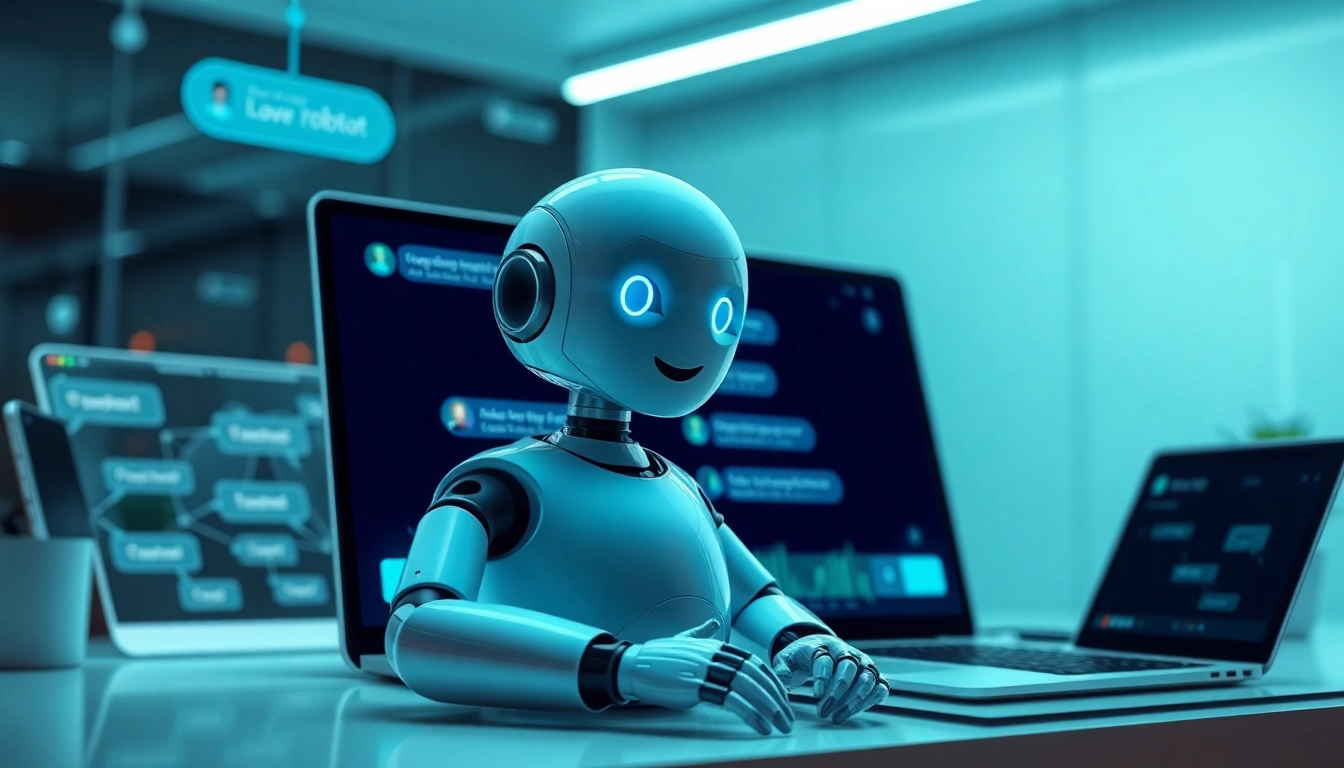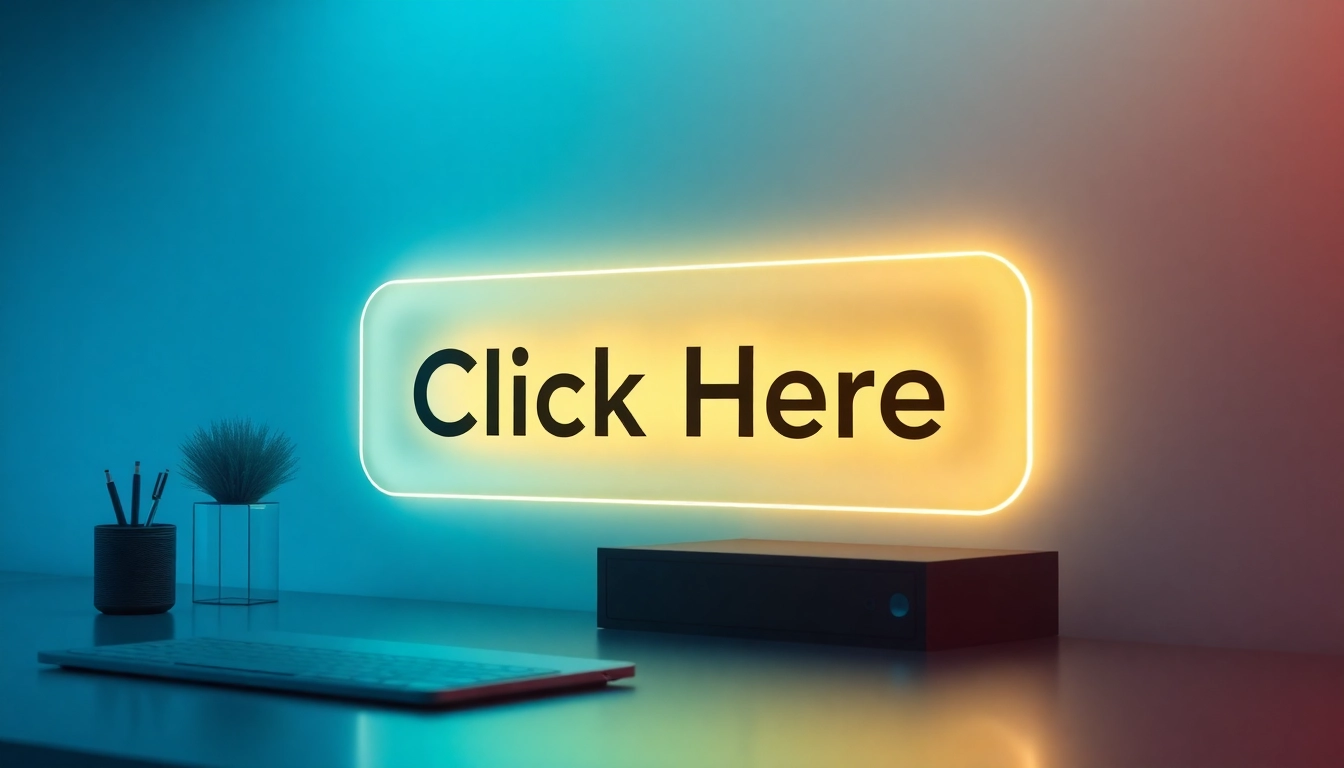Understanding the Role of AI Bots in Modern Websites
What is an AI Bot for Websites?
An AI bot for websites is an artificial intelligence-driven program designed to facilitate interactions between users and a website. These bots can engage in conversations, provide information, and assist users in navigating the site more efficiently. With advancements in natural language processing (NLP) and machine learning, AI bots have become increasingly sophisticated, allowing for real-time interaction that mimics human-like responses. They can be integrated into various parts of a website, including landing pages, customer support sections, or even e-commerce checkouts to streamline user interactions.
The core functionality of an AI bot revolves around its ability to understand and process user inputs, whether they come in the form of text or voice. This capability allows users to ask questions, report issues, or seek guidance on products and services without the need for human intervention. As a result, businesses can provide 24/7 customer support, as well as gather valuable data about user behavior and preferences.
Key Benefits for Businesses
Implementing an AI bot for websites offers numerous advantages for businesses, including:
- Enhanced Customer Support: AI bots can handle a diverse range of customer inquiries simultaneously, minimizing wait times and ensuring users receive immediate assistance.
- Cost Efficiency: By automating responses to common queries, businesses can reduce the workload on human customer service representatives, potentially lowering operational costs.
- Increased Engagement: AI bots can initiate conversations, ask pertinent questions, and guide users through their journey, boosting engagement and conversion rates.
- 24/7 Availability: Unlike human agents, AI bots can operate around the clock, providing consistent support and information to users regardless of time zones.
- Data Collection and Insights: Interactions with AI bots can be analyzed to gain insights into customer behavior, preferences, and common concerns, which can inform business strategies.
Common Use Cases Across Industries
AI bots are versatile tools utilized across various sectors. Here are some common use cases to consider:
- E-commerce: Bots can assist customers in finding products, checking availability, and even processing orders, leading to a smoother shopping experience.
- Healthcare: AI bots can schedule appointments, provide medication reminders, and answer basic health questions, improving patient access to care.
- Travel: Travel websites employ bots to provide recommendations for flights and accommodations, answer queries regarding itineraries, and manage bookings.
- Finance: Bots can assist users with account management, transaction inquiries, and providing financial advice, helping reduce the load on financial advisors.
- Education: Educational platforms leverage bots for tutoring, answering common queries about courses, and facilitating communication between instructors and students.
Implementing an AI Bot for Your Website
Choosing the Right AI Bot Solution
Choosing an appropriate AI bot solution involves assessing several factors, including:
- Business Goals: Clearly define what you want to achieve with an AI bot. Whether it’s improving customer service, increasing sales, or providing personalized user experiences, having clear goals helps in selecting the right bot solution.
- Integration Capabilities: Ensure that the AI bot can seamlessly integrate with your existing systems such as CRMs, databases, and website content management systems.
- User Experience: Select a bot that offers an intuitive user interface. The easier it is for users to interact with the bot, the more effective it will be.
- Scalability: As your business grows, so will the demand for the bot’s capabilities. Choose a solution that can scale and adapt to larger volumes of interactions over time.
- Support and Maintenance: Evaluate the vendor’s support system and ensure they provide ongoing updates and maintenance to keep the AI bot functioning optimally.
Steps to Integration with Your Site
Integrating an AI bot into your website can be streamlined by following these steps:
- Analyze Your Current Systems: Review your existing website infrastructure, identifying integration points for the bot.
- Choose a Bot Platform: Identify a platform that suits your business needs, whether it requires coding skills or allows for no-code implementations.
- Customization: Customize the AI bot’s responses and behavior according to your brand’s voice and user expectations.
- Testing: Prior to going live, thoroughly test the bot to ensure it responds accurately and as expected to various user inputs.
- Launch: Once testing is complete, launch the bot on your website, monitoring performance closely for any potential issues.
Best Practices for Bot Configuration
To ensure your AI bot functions effectively, consider these best practices:
- Define Clear Objectives: Set specific goals for what the bot should accomplish, guiding its responses and functionality.
- Utilize FAQs: Train the bot with frequently asked questions and common issues to model its dialogue accurately.
- Implement a “Fallback” Option: Always provide users a clear option to connect with a human representative if the bot cannot address their needs.
- Regular Updates: Keep your bot updated with new information, ensuring it reflects the latest company offerings and changes in policies or services.
- User Training: Educate users about how to interact with the bot effectively to enhance their experience.
Enhancing User Engagement with AI Bots
Strategies for Improving Interactivity
Interactivity is key to engaging users effectively. Here are several strategies to consider:
- Proactive Engagement: Instead of waiting for users to ask questions, initiate conversations based on user behavior, such as time spent on a page or actions taken on the site.
- Gamification: Integrate elements such as quizzes or challenges that users can engage with via the bot, adding an enjoyable aspect to the interaction.
- Use of Multimedia: Incorporate images, videos, or quick reply buttons to enhance communication and make it more dynamic.
- Emotional Recognition: Implement empathetic responses that can adjust based on user sentiment to create a more personalized experience.
Personalization Techniques for Better UX
Personalization can significantly enhance user experience, leading to higher satisfaction rates. Here are a few personalization techniques:
- User Profiles: Create personalized experiences by storing user preferences and interactions. This allows the bot to tailor responses uniquely based on past behaviors.
- Contextual Messaging: Adjust the bot’s responses according to the user’s journey on the site, responding differently based on their actions.
- Recommendations: Use data-driven insights to offer product or content recommendations based on user interests and browsing history.
- Behavior Tracking: Monitor user interactions with the bot and across your site to refine and personalize future interactions.
Tracking User Behavior and Feedback
Effective tracking of user behavior and feedback can help refine your AI bot’s performance. Consider implementing these strategies:
- Analytics Software: Utilize tools like Google Analytics or specialized chatbot analytics platforms to monitor user interactions with the bot.
- Feedback Loops: After significant interactions, prompt users for feedback to gather insights on their experiences and identify areas for improvement.
- A/B Testing: Regularly test different bot configurations or responses to determine which versions yield better engagement and user satisfaction.
- User Surveys: Conduct periodic surveys that aim to understand user satisfaction and identify additional needs or suggestions users might have.
Performance Metrics for AI Bots
Key Metrics to Monitor
Monitoring the right performance metrics is crucial for assessing the effectiveness of your AI bot. Focus on the following key metrics:
- Response Time: Measure how quickly the bot responds to user inquiries. Prompt responses often correlate with higher user satisfaction.
- User Retention Rates: Track the rate at which users return to interact with the bot, indicating its value and efficacy.
- Engagement Rates: Analyze the number of interactions a user has with the bot over a defined period to gauge levels of engagement.
- Conversion Rates: Assess how effectively the bot drives users to complete desired actions, such as making a purchase or signing up for a newsletter.
Analyzing Bot Effectiveness
To ensure your bot is effective, conduct thorough analyses using data from various performance metrics:
- Trend Analysis: Look for patterns in user inquiries and bot responses to determine where improvements are needed.
- User Experience Surveys: Gather qualitative data from users regarding their experiences with the bot, analyzing common themes.
- Comparative Analysis: Compare metrics before and after implementing changes to the bot’s configuration to measure the effects of those changes.
- Behavioral Insights: Inspect logs of conversations to identify frequently asked questions that the bot struggles to handle and adjust accordingly.
Iterating on Feedback for Continuous Improvement
Establishing a cycle of feedback and iteration is key to enhancing your AI bot’s performance. To do this:
- Regular Updates: Make it a practice to continuously update the bot’s knowledge base with new information and user feedback.
- User-Centric Changes: When implementing changes, prioritize user-suggested features or modifications to build a more user-friendly experience.
- Reassess Goals: Periodically review and refine your goals for the bot based on evolving business needs and user preferences.
- Engage Stakeholders: Involve team members from different departments (e.g., sales, customer service, marketing) to provide diverse insights into the bot’s implementation and performance.
Future Trends in AI Bots for Websites
Emerging Technologies and Innovations
The landscape of AI bots is continually evolving. Here are some emerging technologies and innovations to watch:
- Voice-Activated Bots: An increasing number of users prefer voice commands. Future bots will likely integrate more advanced voice recognition technologies.
- Multimodal Interfaces: Innovations will likely lead to bots that can handle interactions across various channels, including voice, text, and visual inputs.
- Emotional Intelligence: Future AI bots may develop a stronger capacity for emotional recognition, allowing them to adjust responses accordingly.
- Integration with AR/VR: The integration of augmented reality and virtual reality could enable AI bots to guide users through immersive experiences online.
The Evolving Role of AI in Customer Service
The role of AI in customer service will continue to expand, with AI bots becoming more integral to customer interactions. Here are several predictions:
- Seamless User Experiences: AI bots will increasingly provide seamless transitions between bot interactions and live representatives when necessary.
- Enhanced Self-Service Options: Consumers will have access to more self-service solutions, enabling them to resolve issues independently.
- Proactive Support: Bots may evolve to proactively reach out to customers based on predictive analytics and user data, offering assistance before a problem arises.
Preparing for the Next Wave of Digital Interaction
To prepare for the future landscape of digital interaction, businesses should:
- Invest in Technology: Stay up-to-date with the latest advancements in AI and chatbot technologies that can enhance user experience.
- Focus on User-Centric Design: Drive development efforts based on user needs and feedback to ensure bots remain relevant and effective.
- Ensure Scalability: As technology evolves, ensure that your systems can adapt and scale to new demands and user expectations.
- Ongoing Training: Continuously train your bots to understand and respond to emerging trends in user behavior and preferences.



